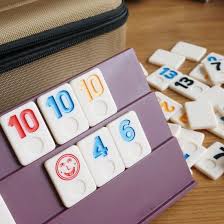Rummy Mahjong, is an exciting twist on traditional games that combines elements of both Rummy and Mahjong. This hybrid game has gained popularity among players looking for a fresh challenge that offers strategic depth and engaging gameplay. In this article, we’ll explore the origins of Rummy Mahjong, its rules, gameplay mechanics, and why it has become a favorite among board game enthusiasts.
Origins of Rummy Mahjong
Rummy, a classic card game with roots tracing back to the early 19th century, focuses on forming sets and sequences. Mahjong, on the other hand, is a tile-based game that originated in China and has a rich history dating back to the Qing dynasty. Rummy Mahjong merges the principles of these two games, creating a unique gaming experience that appeals to fans of both genres.
Basic Rules and Gameplay
Objective
The primary objective of Rummy Mahjong is to create specific combinations of tiles or cards to declare a win. Players aim to form melds (sets or runs) while managing their hands strategically.
Setup
- Players: Typically played with 2 to 4 players.
- Tiles/Cards: The game can be played with Mahjong tiles, Rummy cards, or a combination of both, depending on the specific variant being played.
- Starting the Game: Players draw tiles or cards from a central pile, aiming to improve their hands.
Turns
- Drawing: On each turn, players draw a tile or card from the draw pile.
- Melding: Players can create melds by laying down completed sets or runs on the table.
- Discarding: After melding, players must discard one tile or card, keeping their hands balanced and strategic.
Winning the Game
A player wins by forming the required number of melds and having no unmelded tiles or cards remaining. The game can also have specific scoring rules, rewarding players for unique combinations or special hands.
Strategic Depth
Rummy Mahjong is not just about luck; it requires careful planning and strategic thinking. Here are a few strategies to enhance your gameplay:
- Observe Opponents: Keep track of what tiles or cards your opponents are discarding and picking up. This can give you insight into their strategies and help you block their progress.
- Balance Your Hand: Focus on creating a mix of melds while maintaining flexibility. This allows you to adapt to changing situations during the game.
- Discard Wisely: Be cautious about what you discard. Avoid giving your opponents easy opportunities to complete their melds.
- Utilize Wild Tiles/Cards: If your variant includes wild tiles or cards, use them strategically to complete your melds or create unexpected combinations.
Why Rummy Mahjong is Popular
1. Engaging Gameplay
The fusion of Rummy and Mahjong offers players a dynamic and engaging experience. With elements from both games, players must think critically and adapt their strategies throughout the game.
2. Social Interaction
Rummy Mahjong is often played in social settings, making it a great way to connect with friends and family. The competitive yet friendly nature of the game fosters camaraderie and interaction.
3. Variety of Play
The combination of tiles and cards means that Rummy Mahjong can be played in various ways, with different rules and formats. This variety keeps the game fresh and exciting for repeat players.
4. Cognitive Benefits
Playing Rummy Mahjong enhances critical thinking and decision-making skills. It challenges players to strategize and adapt, making it not only fun but also mentally stimulating.
Conclusion
Rummy Mahjong represents a fascinating blend of two classic games, offering players a unique experience that combines strategy, skill, and social interaction. Whether you’re a fan of Rummy, Mahjong, or just love exploring new games, Rummy Mahjong provides a captivating challenge that’s sure to entertain. With its engaging gameplay and strategic depth, it’s no wonder this hybrid game continues to capture the hearts of players around the world. So gather your friends, set up the tiles or cards, and dive into the exciting world of Rummy Mahjong!




